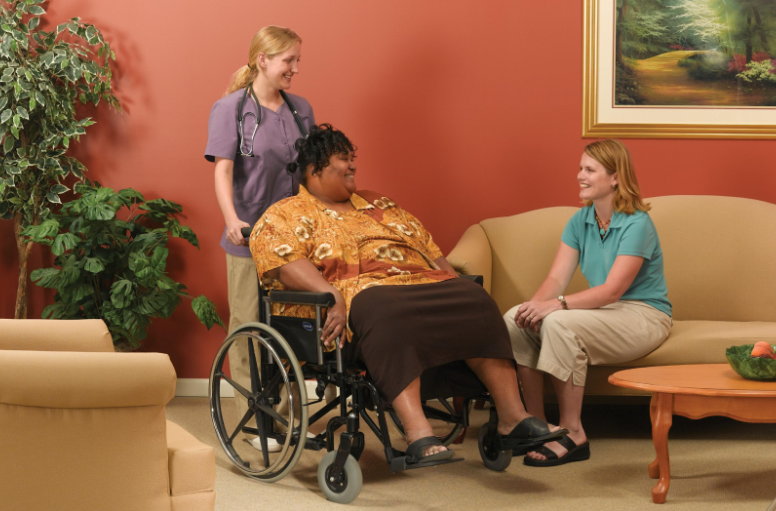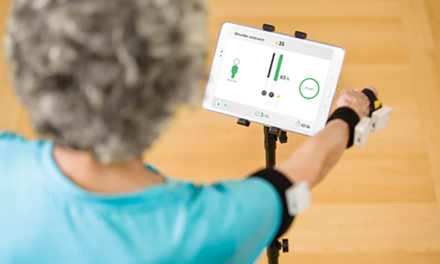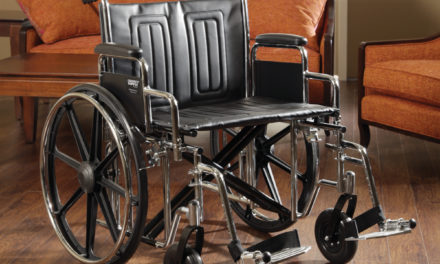Bariatric wheelchairs are specifically designed for overweight or obese individuals. Constructed with heavier-duty materials and larger dimensions to accommodate higher weight capacities, they are an ideal choice for those who need extra support and stability, as well as situations where a patient’s weight makes using a standard wheelchair unsafe or impractical.
Bariatric Wheelchairs At-A-Glance
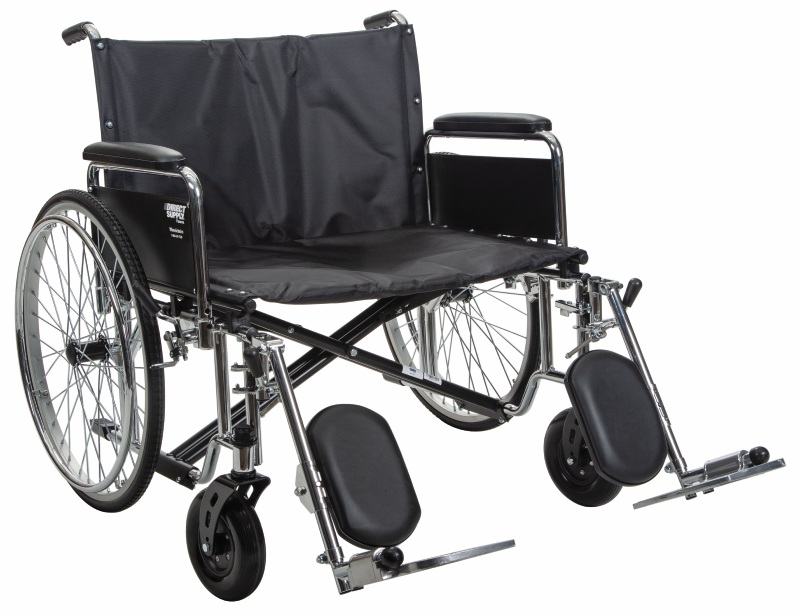
- Weight capacities over 500 pounds
- Wider seats, larger dimensions
- Robust constructions specifically designed to accommodate higher weights
- Stronger axies, heavier tubing, double cross braces, gusseted frames and reinforced upholstery
Key Specifications: Bariatric Wheelchairs
To ensure adequate support, safety and comfort, be sure the following important specifications align with the needs of your specific patient and resident population.
QUICK TIP Be sure to measure door frame widths in your community to ensure bariatric wheelchairs can fit through easily while in use.
Weight Capacity
Up to 1000lbs.
Most standard wheelchairs have a weight limit of 250 to 300 pounds. Exceeding this limit can lead to serious injury if the frame breaks or a part fails. Bariatric wheelchairs are designed for higher weight capacities, ensuring safety and comfort for larger individuals
Seat Width
From 26″ to 32″
Seats that are too narrow create an opportunity for skin shearing. Seats that are too wide rotate legs inward and put a strain on hips.
Seat Depth
From 18″ to 22″
Shallow seats cause forward weight shift and instability, while deep seats can pressure the knees, leading to pelvic tilting. This posterior tilt increases the risk of falling as the user may slide out of their seat.
Back Height
From 18″ to 22″
An average back height for a self-propeller is 16” tall, while 18”-20” is the average for a person who is dependent in propulsion
Backs that are too low cause poor trunk stability. Backs that are too high cause restricted shoulder movement and the resident to lean forward.
Seat-to-Floor Height
17-1/2” to 21-1/2”
Appropriate seat floor height ensures effective foot propulsion, providing exercise and independence. Seats that are too low can cause legs to drag or knees to bend uncomfortably with front riggings.
Frame Weight
Typically, the higher the weight capacity, the heavier the bariatric wheelchair
When selecting a bariatric wheelchair, it is crucial to balance the need for higher weight capacity with the practicalities of handling a heavier frame.
Frame Construction
Most heavy-duty wheelchairs fold from side to side. Highest weight capacity chairs are more likely to have solid frames
Direct Supply® can help you find the right fit:
Bariatric Wheelchair Features for Enhanced Comfort & Safety
In addition to larger dimensions and higher weight capacities, to choose the right bariatric wheelchair for your facility, consider the following:
Legrests
- Articulating—extend while lifting, providing various angles of elevation to help decrease swelling
- Elevating—allow the user to raise their lower extremities. Elevating legrests will always have calf supports
- Swing away—foot plates swing to the side to help minimize fall risk during transfers
Armrests
- Full-length—provide lateral support to help the resident readjust and remain upright, also make it eaiser to get in and out of the wheelchair
- Desk-length—allows user to get closer to a desk or table
- Removable or flip back—make it easier to get in and out of the wheelchair especially when residents are self transferring using a slide board
- Height adjustable—offer customizable comfort
Backrests
- Adjustable—prevents hunching which can open up the lungs and help mitigate organ compression
- Tiltable—good for weight distribution to help mitigate pressure injuries as well as for g-tube feeding positioning and those at high risk for falls
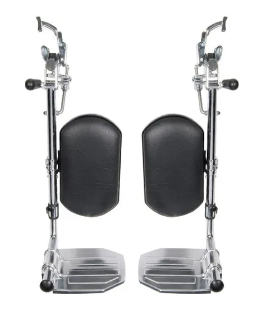
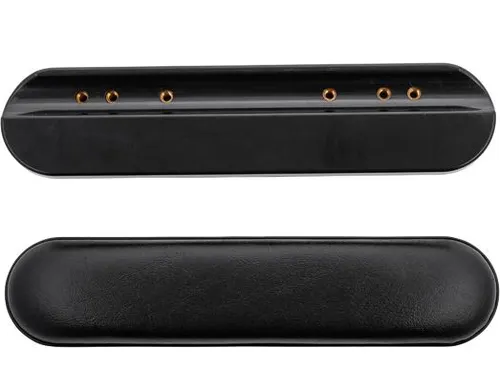
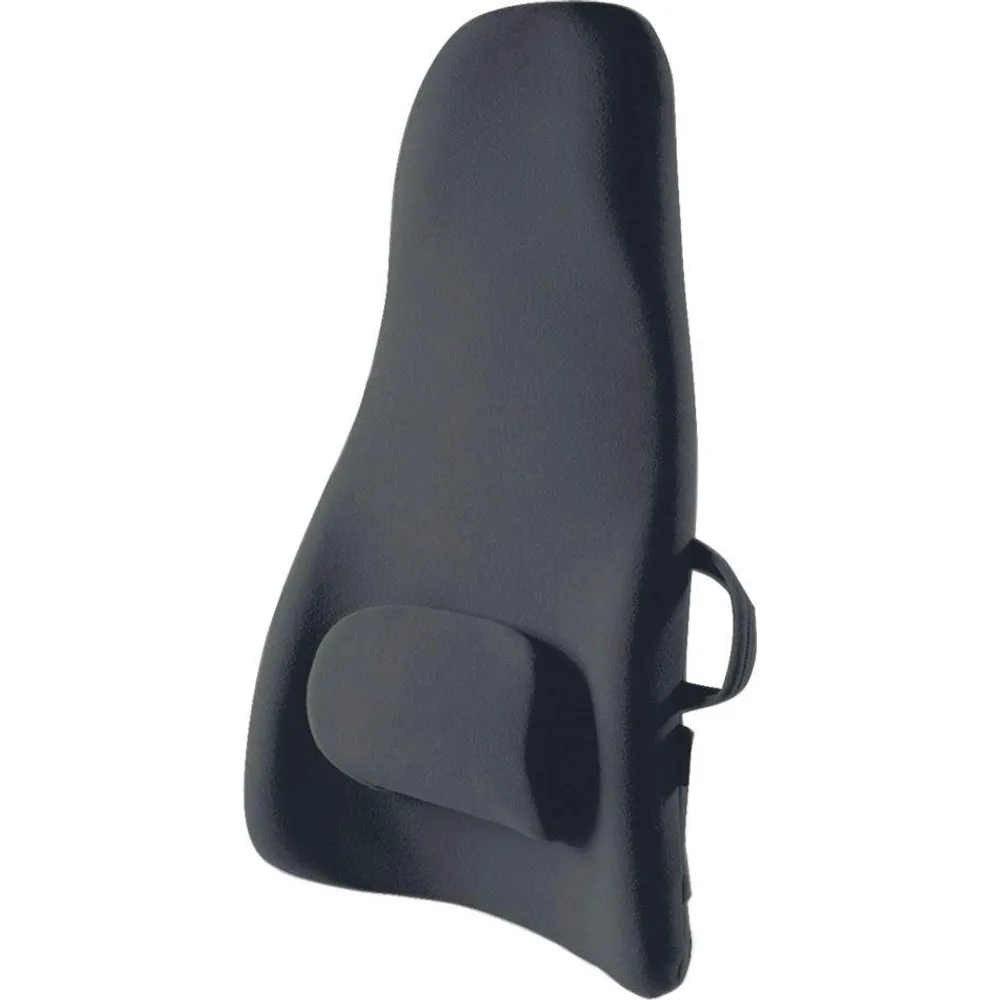
Bariatric Wheelchair FAQs
What is a bariatric wheelchair?
A bariatric wheelchair is a wide wheelchair designed to accommodate individuals who require a higher weight capacity than standard wheelchairs, typically supporting weights up to 1000 lbs or more.
Can a bariatric wheelchair be transported easily?
While bariatric wheelchairs are heavier and larger than standard models, many are designed to fold for easier transport. However, solid frame models offer maximum support but are less portable.
What features should I look for in a bariatric wheelchair?
Key features include reinforced frames, adjustable seat widths and heights, heavy-duty wheels, comfortable upholstery, and customizable accessories such as leg rests and armrests.
How do I maintain a bariatric wheelchair?
Regular maintenance includes checking for loose parts, ensuring the wheels and brakes are functioning properly, and cleaning the upholstery. Follow the manufacturer’s guidelines for specific maintenance requirements.
What should I consider for bariatric wheelchair safety?
Ensure the wheelchair is the correct size and weight capacity for the user. Regularly check for any wear and tear, and make sure the user knows how to operate the wheelchair safely, including using the brakes and navigating different terrains.
Explore Bariatric Wheelchairs at Direct Supply®
Direct Supply provides an extensive selection of bariatric wheelchairs from top brands such as Panacea, Drive Medical, Invacare, Graham Field, Gendron, and more. Our range includes various models and features to ensure you find the perfect fit for your residents’ specific needs. Whether you require wheelchairs with high weight capacities, specialized seating options, or enhanced maneuverability, we have the right solution. Our diverse inventory ensures that you can select wheelchairs that not only meet the comfort and safety requirements of your residents but also align with the operational needs of your staff and the financial considerations of your facility. With our wide variety of options, finding the ideal bariatric wheelchair for your unique situation has never been easier.
